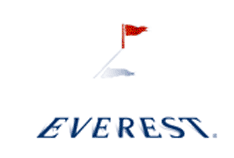Everest Re Profits, Core Earnings Up
 Bermuda reinsurer Everest Re Group Ltd. fourth-quarter profit jumped 53 percent and core profit also rose as revenue climbed the company announced yesterday [Feb. 9].
Bermuda reinsurer Everest Re Group Ltd. fourth-quarter profit jumped 53 percent and core profit also rose as revenue climbed the company announced yesterday [Feb. 9].
With its principal executive offices in Wessex House on Reid Street, Everest is a leading global provider of property and casualty reinsurance and insurance.
Everest reported fourth quarter 2010 after-tax operating income, which excludes net realized capital gains and losses, of $257.8 million, or $4.70 per diluted common share, compared to after-tax operating income of $192.0 million, or $3.19 per diluted common share, in the fourth quarter of 2009.
Net income, including net realized capital gains and losses, was $302.5 million, or $5.51 per diluted common share, for the fourth quarter of 2010, compared to $197.2 million, or $3.28 per diluted common share, for the same period last year.
For the year ended December 31, 2010, after-tax operating income was $518.1 million, or $9.08 per diluted common share, compared to $763.7 million, or $12.51 per diluted common share, for 2009. Net income, including net realized capital gains and losses, was $610.8 million, or $10.70 per diluted common share, for the full year 2010, compared to $807.0 million, or $13.22 per diluted common share, for the same period in 2009.
Commenting on the Company’s results, chairman and CEO Joseph V. Taranto said, “Despite a challenging marketplace and a significant number of global catastrophe events in the year, we achieved an operating return on equity of 9% and grew book value per share by 12% in 2010.”
Operating highlights for the fourth quarter and full year 2010 included the following:
- Gross written premiums were $1 billion for the quarter, a decline of 2.5% compared to the same quarter in 2009. Worldwide reinsurance premiums were down 4.5% while insurance premiums were up 6% in the period. For the full year, gross written premiums totaled $4.2 billion, an increase of 2% compared to last year. Adjusting for the impact of foreign exchange, premium actually grew less than 1% year over year.
- The loss ratio was 70.6% for the quarter and 74.9% for the year, compared to 63.1% and 61.0%, respectively, for the same periods in 2009. For the full year, the attritional loss ratio, excluding 14.5 points of catastrophe losses and very modest favorable development, increased to 60.8% compared to 56.0% for 2009. Accordingly, the current accident year combined ratio, excluding catastrophe losses, increased 4.6 points to 88.7% for 2010.
- Net investment income was $184.9 million for the quarter and $653.5 million for the year; up significantly from the comparable periods in 2009 primarily due to improved limited partnership results.
- Net after-tax realized capital gains totaled $44.7 million for the quarter, due to after-tax fair value adjustments of $30.8 million and net after-tax realized gains of $13.9 million from the sale of securities.
- Net after-tax unrealized capital gains decreased $252.3 million during the quarter, primarily due to an increase in interest rates and a general decline in the values of municipal bond holdings.
- Income taxes on operations included a one-time benefit of approximately $49.5 million, as a result of adjustments related to a favorable ruling on an appeal with the Internal Revenue Service.
- Cash flow from operations was $127.9 million for the quarter compared to $186.1 million for the same period in 2009. For the full year 2010, cash flow from operations was $918.5 million, up 17% when compared to the same period last year.
- After-tax operating income return on average adjusted shareholders’ equity was 8.9% for the full year 2010 compared to 14.0% in 2009.
- During the quarter, the Company repurchased approximately 589,000 of its common shares at an average price of $87.78 and a total cost of $51.7 million. For the year, the Company repurchased 5.1 million of its common shares, or 8.5% of its total outstanding shares at year end 2009, for a total cost of $398.6 million. The repurchases were made pursuant to a share repurchase authorization, provided by the Company’s Board of Directors, under which there remains 3.4 million shares available.
- Shareholders’ equity ended the year at $6.3 billion, up 3% from year-end 2009. Book value per share, which benefitted from share repurchases made during the year, increased 12% to $115.45 as of December 31, 2010 from $102.87 at year-end 2009.


This is a great explanation of the year Everest had. The clarity of the information is great and I think that if you had area that people could look up the definition of words and phrases that people could learn a great deal- Well done Everest Re also-